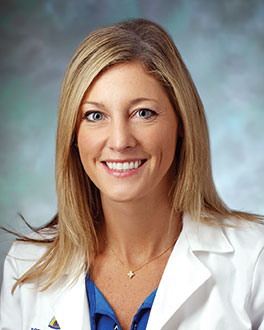Infection prevention and control has been a top priority in long term and post-acute care centers this past year and a half. However, much of it has understandably focused on COVID-19. Moving into flu season and the holidays, there is much to learn from COVID to help prevent and manage other common infections.
While Focused on COVID . . .
While everyone was busy managing the pandemic, a few developments regarding other infections have been made.
For instance, earlier this summer, the Infectious Disease Society of America and the Society for Healthcare Epidemiology of America released new evidence-based guidelines on the management of Clostridioides difficile infection (CDI) in adults.
The guidelines include three recommendations on suggested treatments for patients with initial and recurring CDI episodes, based on new data for fidaxomicin and for bezlotoxumab, a monoclonal antibody targeting toxin B produced by C. difficile. Specifically, the revised guidelines say that patients with an initial C. diff infection should receive fidaxomicin instead of a standard course of vancomycin, though they say that implementing it depends on available resources.
 Elsewhere, Ghinwa Dumyati, MD, professor of medicine, infectious diseases, at the University of Rochester Medical Center, says, “In recent years there have been more studies showing that reducing inappropriate urine culture testing reduces the use of antibiotics, which is a positive step forward. At least one study found that inappropriate treatment of urinary tract infections with antibiotics raises the risk of C. diff.”
Elsewhere, Ghinwa Dumyati, MD, professor of medicine, infectious diseases, at the University of Rochester Medical Center, says, “In recent years there have been more studies showing that reducing inappropriate urine culture testing reduces the use of antibiotics, which is a positive step forward. At least one study found that inappropriate treatment of urinary tract infections with antibiotics raises the risk of C. diff.”
Influenza took a back seat during the pandemic. According to the Centers for Disease Control and Prevention (CDC), indicators of influenza began to decline by mid- to late-February 2020. In the 2020-2021 season, the United States saw approximately 700 deaths from influenza, compared with 22,000 in the previous season. These numbers are likely due to several contributing factors, including lockdowns and quarantines, mask-wearing, and hand hygiene.
“Our flu rates were fantastic this last year because everyone was taking precautions,” says Morgan Katz, MD, MHS, assistant professor of medicine at the Johns Hopkins University School of Medicine. “We did learn some things from COVID that will likely help us with flu prevention moving forward.”
Putting Stewardship on the Front Burner
Katz says that in recent years, clinicians have made advances on issues such as antibiotic stewardship. “That’s been put on the back burner [for now], but we need to get back on track with that,” she says.
Katz says that when COVID hit, staff were incredibly taxed, overwhelmed, and overworked, and they didn’t have time to prioritize stewardship.
 At the same time, she says, “Prior to the pandemic, CDC had just come out with guidelines for enhanced barrier precaution for nursing homes, which prioritizes the use of PPE [personal protective equipment] for specific high-risk residents during high-risk activities to reduce the transmission of multi-drug-resistant organisms. Unfortunately, with the pandemic, we had to dedicate our PPE and our time and effort to caring for COVID patients.”
At the same time, she says, “Prior to the pandemic, CDC had just come out with guidelines for enhanced barrier precaution for nursing homes, which prioritizes the use of PPE [personal protective equipment] for specific high-risk residents during high-risk activities to reduce the transmission of multi-drug-resistant organisms. Unfortunately, with the pandemic, we had to dedicate our PPE and our time and effort to caring for COVID patients.”
IPs Need Attention ASAP
“For nursing homes, I think one positive development is that everyone realizes we need more robust infection prevention programs,” Dumyati says. The federally mandated infection preventionist position may need to be expanded moving forward, she says.
“Being able to support someone working full-time on infection prevention and control is something we learned we need. We must figure out how to support this position and enable someone to have adequate time and resources to do the job well,” she says. “People are paying attention to [the issue], and that’s very positive. Looking ahead, we will need to look at the layout and design of facilities.”
One study showed that smaller units with fewer people such as the Green House model fared much better during the pandemic than facilities with multiple people sharing a room and a bathroom, Dumyati says. However, she adds, “Funding needs to be available.” In the meantime, she suggests, “We can look at things like updating ventilation and HVAC systems and replacing carpeting.”
Lessons Learned
Getting staff and others vaccinated for influenza and pneumococcal illnesses has always been a challenge. It’s too early to tell if the pandemic and the situation with the COVID vaccine will change how people view vaccinations in general, experts note.
“We mandated influenza vaccines for staff in the hospital and improved our numbers. In the nursing home, we never went above about 60 percent,” Dumyati says. “There is always distrust by some groups, and it’s clear from the response to the COVID vaccine that this hasn’t changed.
“But we need to be able to address these things. I have spent hours talking with people who didn’t want to get vaccinated. Some ultimately agreed to get vaccinated, and others didn’t.”
The recent groundswell for COVID vaccine mandates for staff may extend to influenza as well. “In general, based on the discussions I’ve had, facilities are considering mandating flu vaccines moving forward,” Katz says. “My hope is that this will happen, as it has proven to be the most effective way to increase staff vaccination rates.”
With flu season approaching, Dumyati says providers need to address all the issues and objections now. A blanket approach won’t work, she says. Instead, leaders need to talk to people one-on-one and have multiple conversations.
“We have learned that you can’t wait until the last minute to make decisions,” Katz says. “We need to have discussions about goals of care early. We found out during the pandemic how important that is.”
Promising Future?
COVID brought to light the continued need to improve infection prevention in long term care settings, Katz says. “We need to evaluate processes and regulations in this setting and dedicate the resources and research to improving practices. I do think things are going to change because of what has happened.”
Nonetheless, there may be some bumpy roads ahead. “I am prepared for fall to be a challenging time,” Katz says. “The flu is going to come back, as will other viruses. And the onset of the Delta variation of COVID makes it clear we’re not done with this virus either.”
Joanne Kaldy is a freelance writer and communications consultant based in Harrisburg, Pa.